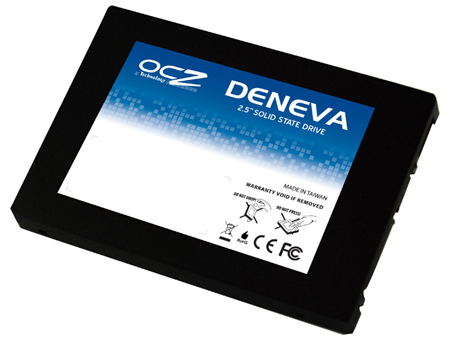With its sights set on SSD supremacy, OCZ is this week revitalising its enterprise line with the launch of new Deneva Series drives.

Built to order for enterprise customers, the Deneva SSD hopes to meet the performance and stability demands of server environments and is described by OCZ as the first SSD "to deliver Tier-0/1 Enterprise level reliability".
Making use of a SandForce 1500 controller, Deneva - available in capacities ranging from 50GB to 400GB - boasts read and write speeds of up to 285MB/s and 275MB/s, respectively, and 4KB random writes up to 50,000 IOPS.
Performance is what you'd expect to see from a SandForce-based drive, but OCZ has built on the drive's speed credentials with a number of enterprise-specific features; including a supercap that acts as a temporary power backup in the event of sudden power loss, a MTBF of 10 million hours and a custom-built firmware tailored to the end user's needs.
Ensuring all manners of implementation are covered, Deneva is also available in a choice of form factors with a selection of either SATA, SAS, FC or PCIe interfaces.













